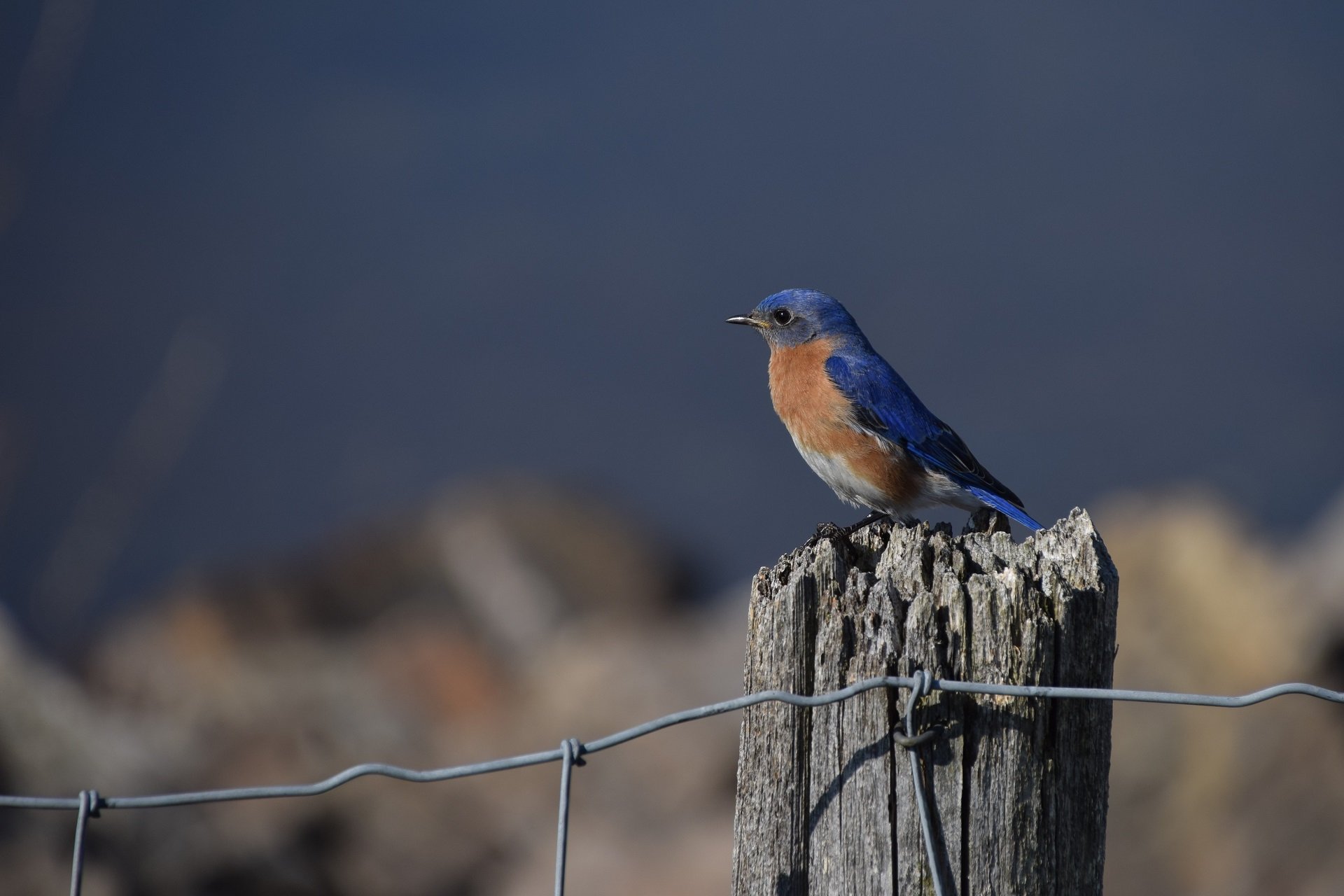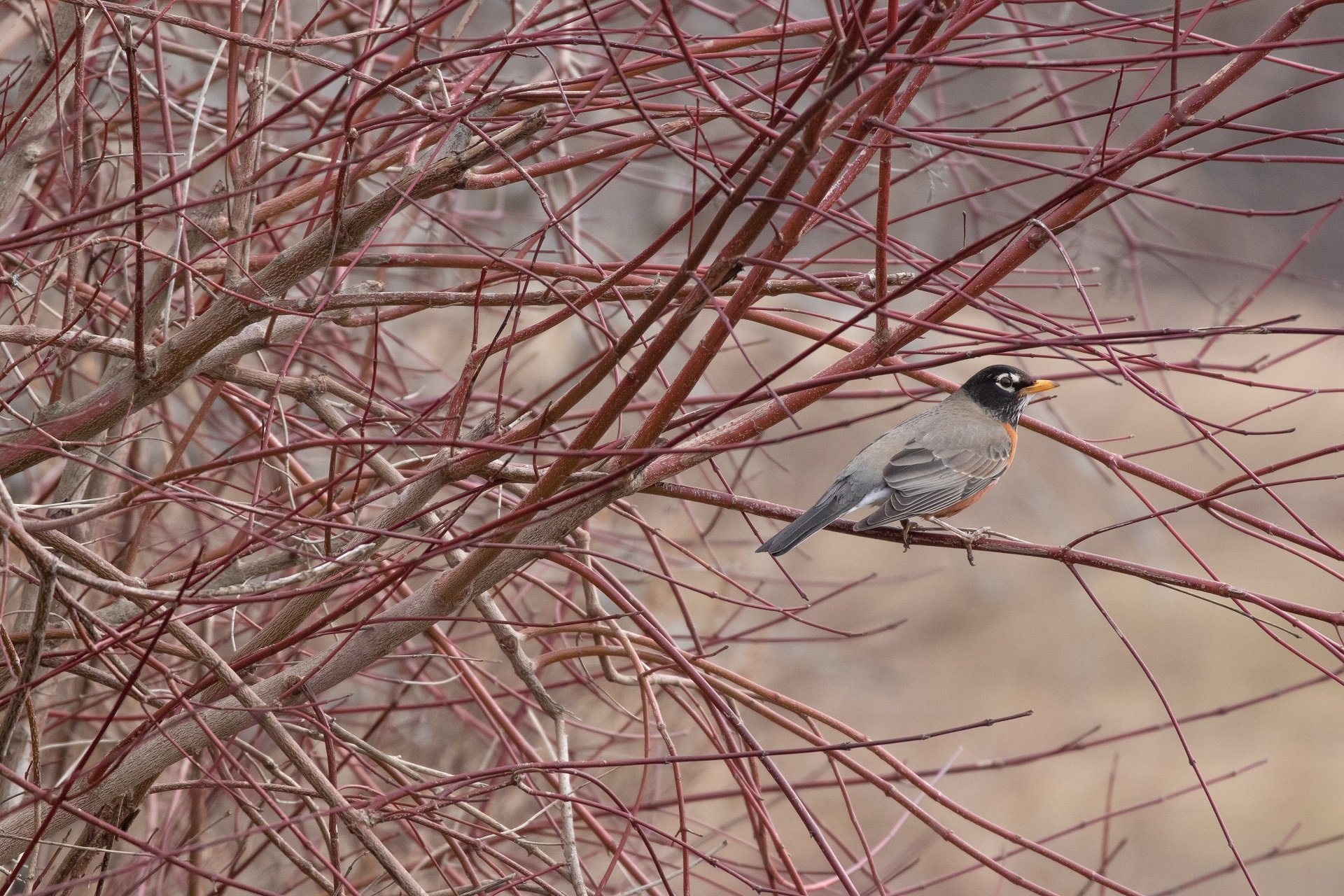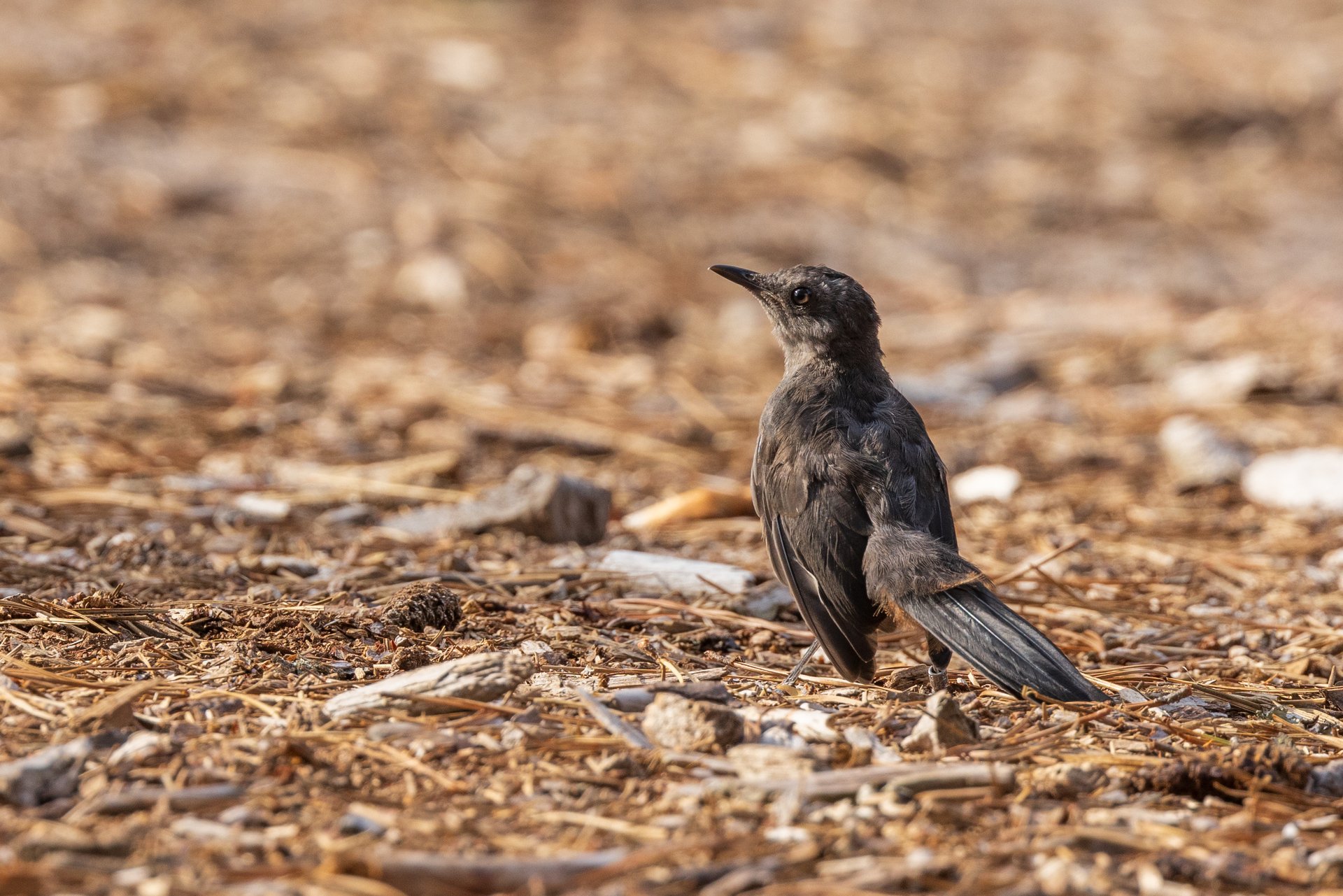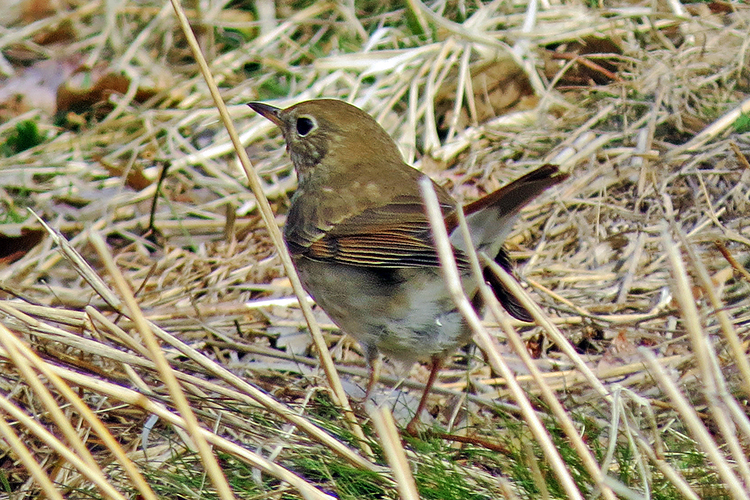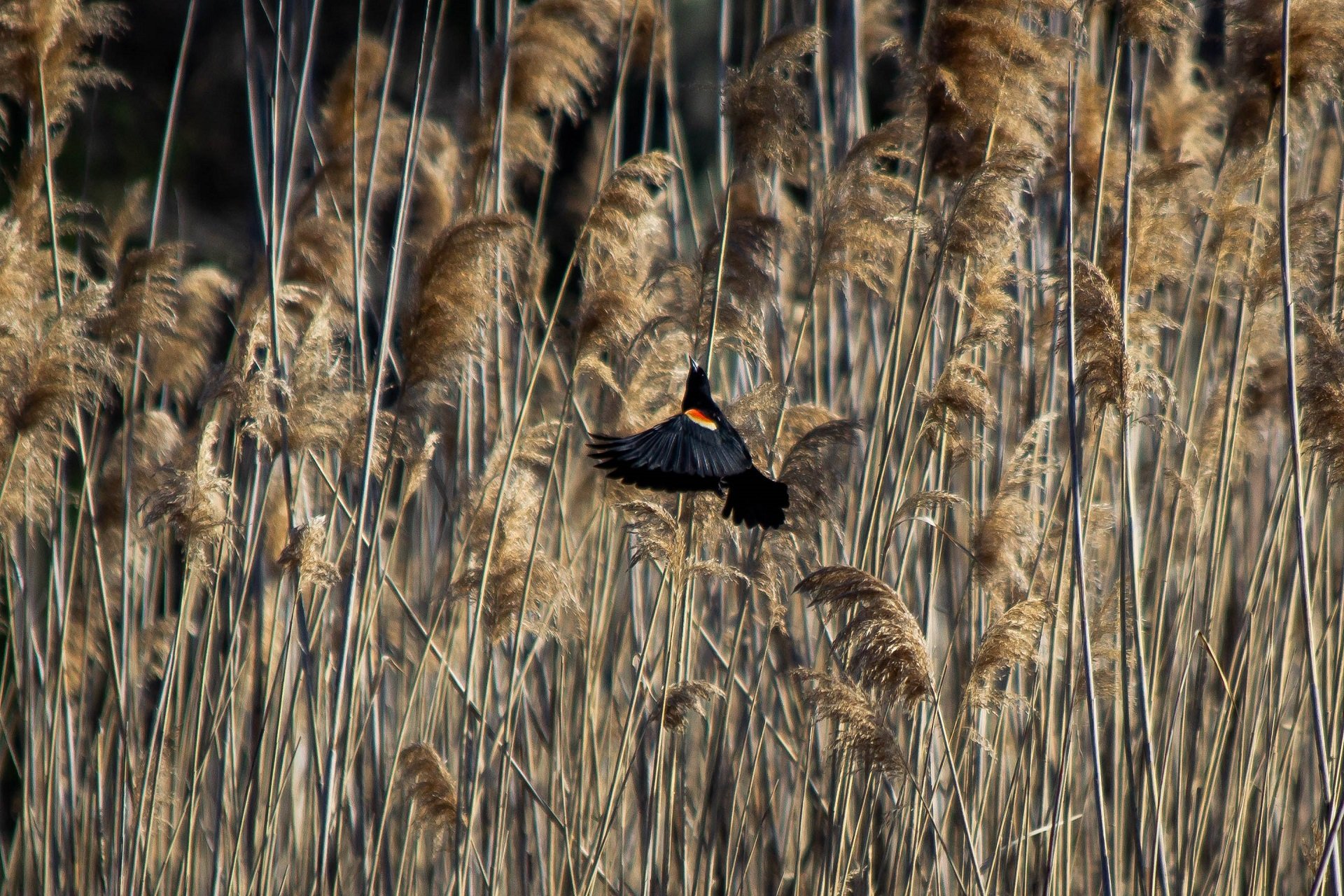Not-So-Common Winter Birds
Northern Cardinals. Blue Jays. American Goldfinches. You expect to see these birds during the winter. But the American Robin and the Eastern Bluebird? These fabled harbingers of spring catch many New Englanders off guard this time of year. After all, shouldn’t they be sunning themselves down south?
Not necessarily. Many birds that have normally flown south for the winter are sticking around, possibly due to increasing temperatures and a more readily available food source (i.e., berries)–a trend that’s been increasing over the last 40 years. And, in some cases, we humans have contributed to the number of birds seen this time of year.
Read on to learn about some of the traditionally migratory species you’re likely to glimpse outside your window come rain, shine, or snow.
American Robin
A rufous-colored pot belly and charcoal upper body make this bird easy to identify year-round. Come early spring, the robin’s jubilant song–cheerily cheerio cheerup–is often one of the first you’ll hear in the morning and one of the last you’ll hear at dusk.
Winter Survival Strategy
While most often associated with a worm hanging from its beak, the robin can survive the colder months by indulging on the berries of fruiting plants. (Those pretty native ornamentals we plant such as holly and Virginia creeper provide a plentiful feast for these feathered opportunists!) These birds also find strength in numbers, roosting together in winter to fend off hungry predators.
Where You’ll Find Them
Robins can be found almost everywhere, from cities to forests. In winter, look for these ubiquitous birds on lawns and in fields and swampy woodlands throughout Massachusetts (particularly in the east and southeastern parts of the state where temperatures tend to be milder).
Interesting Fact
Robins have been known to display intoxicated behaviors like stumbling and falling after gorging on fermented honeysuckle berries.
Eastern Bluebird
A striking appearance and cheerful song (churlee-churlee!) make this species a favorite among backyard birders. Mr. and Mrs. look completely different: Males sport bright blue above and warm orange below, whereas females maintain a more muted appearance.
Winter Survival Strategy
Fruiting trees and backyard feeder offerings provide the necessary nourishment these birds need in order to survive colder temps. And nest boxes, which have become increasingly popular among bluebird enthusiasts, provide essential protection from the elements.
Where You’ll Find Them
In winter, Eastern Bluebirds can be found in large suburban and rural backyards across Massachusetts. In the spring, look for them in open fields and orchards with short grass and scattered trees or fence posts, where they can readily perch and spy insects on the ground.
Interesting Fact
This species tends to be family oriented. Juvenile bluebirds often stick around after fledging to help their parents raise the next brood of chicks, taking turns feeding the young and defending the nest.
Gray Catbird
Dark gray all over with a black cap and chestnut undertail coverlets, the Gray Catbird is named for its unmistakable cat-like call (Nyeww? Nyaay?), most often given in response to predators.
Winter Survival Strategy
Similar to American Robins and Eastern Bluebirds, Gray Catbirds switch up their food source as a way to survive the colder months. While these birds normally enjoy a protein-rich diet of insects in the spring, you’ll find them noshing on fruit and berries in the winter.
Where You’ll Find Them
These shy birds lurk in dense shrubbery along woodland edges and farm fields in suburban or rural settings in the southeastern part of the state—a far cry from their normal winter setting, which can be as far away as Belize.
Interesting Fact
Though sweet in appearance, Gray Catbirds have been known to dine on the eggs and nestlings of other woodland species as part of their competitive survival strategy.
Hermit Thrush
Though quiet as a mouse in winter, the Hermit Thrush is full of song in spring. In fact, you’re likely to hear this small, olive-brown-colored forest dweller long before you see him. Considered by many to be the finest songster in North America, the Hermit Thrush utters a song that consists of a series of ethereal flutelike phrases.
Winter Survival Strategy
In addition to Hermit Thrushes enjoying a more readily available supply of berries and fruits (and the occasional suet snack), rapid regeneration of forest flora at old logging sites has provided abundant habitat for these hardy birds. Hermits, like other birds, sun themselves and shiver to stay warm in extreme weather.
Where You’ll Find Them
Hit the trail to spot this bird. Hermit Thrushesprefer secluded woodland habitats, from the damp mixed forests of western Massachusetts to dry pine barrens along the coast. Common characteristics of their nesting areas are a dense understory (think saplings and shrubs) and an abundance of evergreens.
Interesting Fact
Early naturalists were so impressed by the musical refrains of the Hermit Thrush that they called it the “American Nightingale.”
Red-winged Blackbird
While not common this time a year, the Red-winged Blackbird has been known to make appearances during the wintertime. Just don’t go looking for its scarlet-and-yellow shoulder stripes: in winter, the males appear all-black, while females appear streaky dark-and-pale brown year-round.
Winter Survival Strategy
Warmer temperatures and a greater supply of food and water are the primary reasons some Red-winged Blackbirds are weathering the colder months with us. Like most birds, Red-winged Blackbirds fluff their feathers, using them for insulation just as we would a puffy down jacket. And, similar to the robin, these birds roost together in winter to improve their chances of survival.
Where You’ll Find Them
Though most Red-winged Blackbirds hightail it to the southern states in winter, some can be found in agricultural fields and meadows along the southeastern coast where they feed on corn, wheat, and waste grain.
Interesting Fact
Returning male Red-winged Blackbirds migrate back to Massachusetts in large flocks, staking out and fiercely defending their territories well in advance of the females’ arrival. These guys are so protective, they’ve been known to dedicate more than a quarter of daylight hours to territory defense.
Upcoming Birding Programs
Birders Meeting 2024
-
Hogan Campus Center, College of the Holy Cross, Worcester
-
Sunday, April 21
8:00am-4:30pm
Adults
Sunday Morning Bird Walks
-
Wachusett Meadow Wildlife Sanctuary, Princeton
-
Sunday, April 21
8:00-9:30am
Adults
Introduction to Bird Photography
-
Boston Nature Center and Wildlife Sanctuary, Mattapan
-
Sunday, April 21
9:00am-12:00pm
Adults
Stay Connected
Don't miss a beat on all the ways you can get outdoors, celebrate nature, and get involved.



